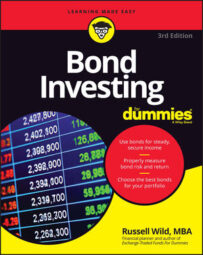How to read bond ratings
Before you buy a bond, get an idea of how much financial muscle the issuer has. Bond ratings are available through any brokerage house. Three of the most popular rating services are Moody’s, Standard & Poor’s, and Fitch. The following table shows the system each uses to rate bonds.
| Credit risk ratings | Moody’s | Standard & Poor’s | Fitch |
|---|---|---|---|
| Investment grade | |||
| Tip-top quality | Aaa | AAA | AAA |
| Premium quality | Aa | AA | AA |
| Near-premium quality | A | A | A |
| Take-home-to-Mom quality | Baa | BBB | BBB |
| Not investment grade | |||
| Borderline ugly | Ba | BB | BB |
| Ugly | B | B | B |
| Definitely don’t-take-home-to-Mom quality | Caa | CCC | CCC |
| You’ll be extremely lucky to get your money back | Ca | CC | CC |
| Interest payments have halted or bankruptcy is in process | C | D | C |
| Already in default | C | D | D |
Bond ratings are available through any brokerage house.
Questions to ask a bond broker about a bond
As you enter the world of bond investing, you may choose to work with a broker. But use some caution. Ask the questions in the following list — and get acceptable answers — before parting with your cash.
-
Who is the bond issuer?
Is it the U.S. Treasury? General Electric? Dade County, Florida? The Russian Federation? Moe’s Hardware Store? A bond is an IOU, and an IOU is only as good as the entity that owes U. In addition, different kinds of bonds have different characteristics, such as taxability, callability, and volatility.
-
How is the bond rated?
Especially among corporate bonds (more likely to default than municipal or agency bonds), you want to know whether the company issuing the bond is financially stable. Ratings are readily available through any brokerage house.
-
What is the maturity date?
Long-term bonds tend to pay higher rates of interest, but your money is tied for longer and the price of the bond, should you wish to sell it before maturity, tends to be more volatile.
-
What is the yield-to-maturity?
There are many ways of measuring a bond’s return. Yield-to-maturity is perhaps the most important measure. (Bond funds, which have no maturity, can be more difficult to compare.)
-
Is the bond callable?
Can the issuer of the bond hand you back your money at any time? All things being equal, a callable bond is not desirable, and you should get more interest in compensation for the call feature.
-
What’s the worst-case yield?
Suppose the bond does get called. What would be your yield on the bond at that point? When comparing callable bonds, this figure is very important.
-
May I please have the CUSIP?
The CUSIP (Committee on Uniform Security Identification Procedures) identification allows you to go to www.finra.org to see what recent trades have been made on any particular bond. Doing so gives you a good idea of the fair price for the bond you’re being offered.
Important websites for bond investors
Successful bond investing isn’t about luck. It’s about researching markets and comparing offers. (And luck.) These six websites serve as your navigation guide through the vast universe of bonds and bond funds.
FINRA: Find scores of information on bond yields, prices, and trends at the Financial Industry Regulatory Authority site.
TreasuryDirect: Find out what your savings bonds are worth. Buy and sell U.S. Treasury bills and bonds at no cost.
Bloomberg: At the Bloomberg site, go to Markets, Market Data, Rates & Bonds for up-to-date information on multiple bond markets.
Yahoo! Finance: This site offers scads of information on individual bonds and bond funds. Be aware that you’re looking at both news and advertisements, and they get easily jumbled on the screen.
Moneychimp calculator: Here, you can put in the price of the bond, the coupon rate, and the maturity date, and out comes the all-important yield-to-maturity.
How to choose between a taxable and a tax-free municipal bond
As a bond investor, you’re probably most interested in the bonds that will leave you with more money at the end of the day. If it comes to a choice between taxable and tax-free municipal bonds, grab your calculator and apply the following rather simple formula to determine the potentially more profitable bond:
-
Start with 100.
-
Subtract your tax bracket to find your reciprocal.
If you are in the 28 percent bracket, for example, subtract 28 from 100. That number — 72 — is called the reciprocal of your tax bracket.
-
Divide the municipal yield by the reciprocal.
The result tells you what you would have to earn on the taxable bond to equal the amount you would get on the tax-exempt municipal bond.
Using these numbers, consider a muni (a short, and rather endearing, abbreviation of municipal bond) paying 5 percent:
5 / 72 = 6.94 percent
That number, 6.94, represents your tax-equivalent yield, or your break-even between taxable and tax-exempt bond investing. If you can get 5 percent on a muni versus 6.94 percent on a taxable bond, it won’t matter which you choose, as far as take-home pay. (Of course, other factors may matter, such as the quality or the maturity of the bond.) If the taxable bond is yielding greater than 6.94 percent, it will likely be your best bet. If the taxable bond is yielding less than 6.94 percent, you’re likely better off with the tax-free bond.

